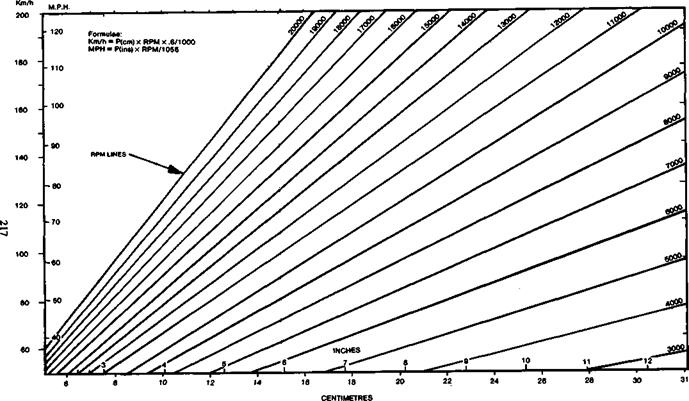RELATION OF PITCH TO SPEED
Since the pitch is the distance advanced by a blade in one revolution, the relationship of pitch to RPM and speed is fixed, nominally. This does not mean that fitting a propeller of a certain pitch will mean a model must reach the appropriate speed, because this will depend on the engine’s ability to drive the propeller at the required RPM and the thrust even then may not equal the aircraft drag at the nominal speed. It is nonetheless useful to know the nominal speed for a given pitch/RPM relationship since this can be related to the engine power curve published by the manufacturers or in model aircraft magazine engine review articles. Knowing the RPM attainable with a given propeller, the model flier then can assess the suitability of the propeller for a model which flies at a particular speed, or which is intended for that speed. The chart in Figure 14.12 expresses die pitch-
Fig. 14.11 Layout schemes for varieties of non-constant pitch [nominally rated equal at 75% radius]
![]()
|
|
|
|
|
PITCH Fig. 14.12 Chart relating pitch and RPM to V |
RPM – Speed relationship graphically and may be used in several ways. If the engine’s RPM for maximum power is known, the appropriate RPM diagonal may be followed to read off nominal speeds and the pitches required for each. Or the design speed may be the starting point and then a series of RPM and pitch figures may be found. For points out of range of the chart, the formulae shown may be used.
The actual flight speed attained by a model depends on the thrust-drag relationship. The chart suggests not that any particular speed will be attained but only what propeller pitch is appropriate for a particular r. p.m. and speed.














